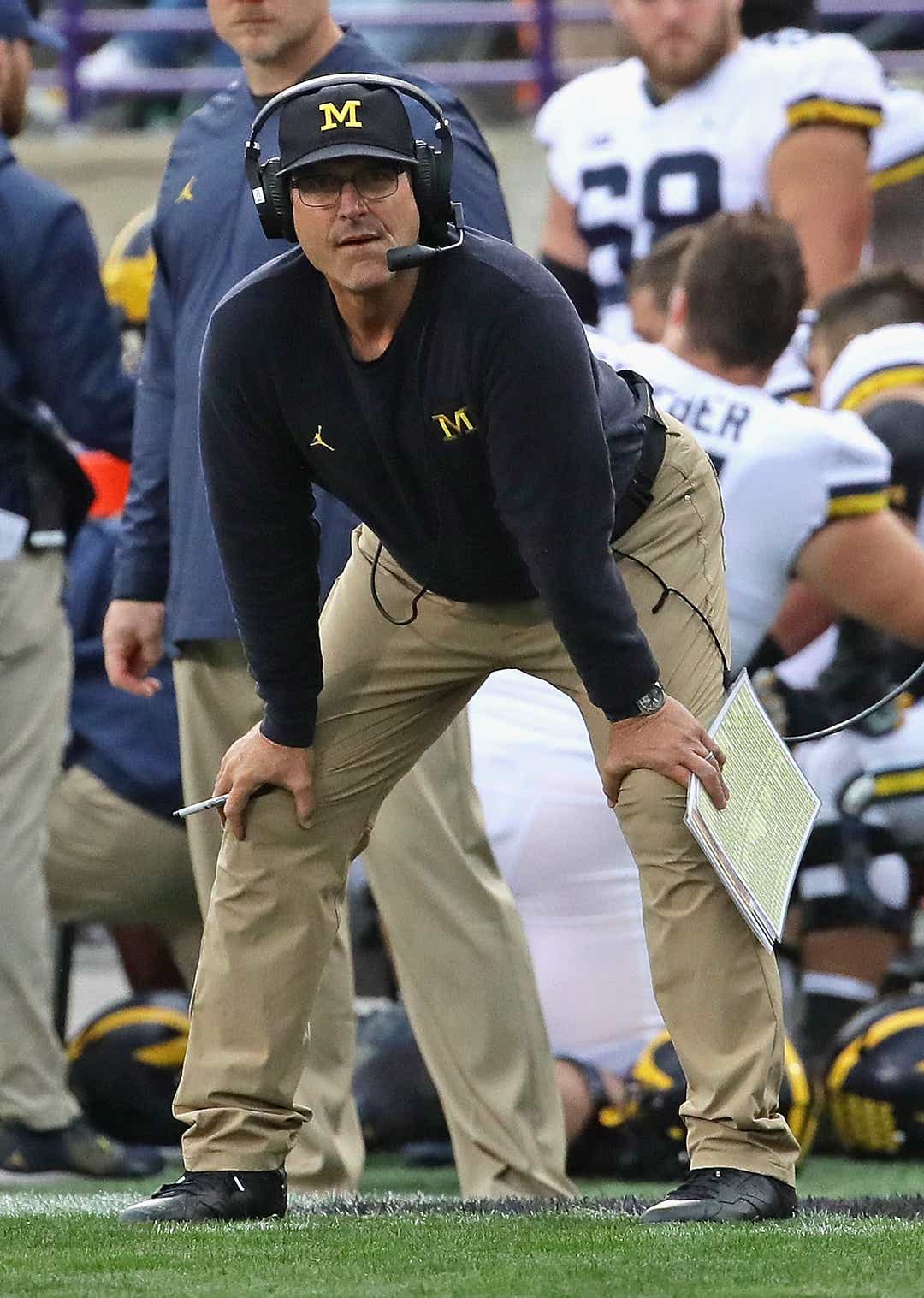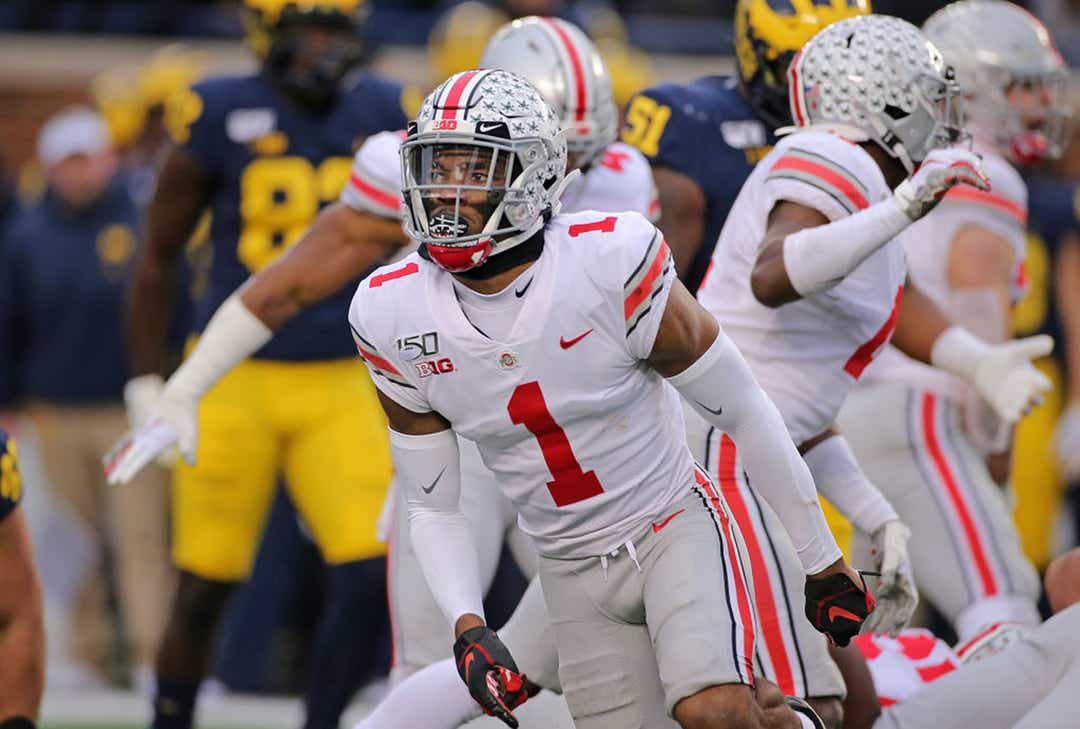The final images of Michigan football's 2019 season were grisly. Snapshots of JK Dobbins zipping through holes as he scored four touchdowns to lead Ohio State to a 29-point win over the Wolverines. Pictures of Jerry Jeudy torching Michigan’s secondary in Alabama’s 35-16 victory at the Citrus Bowl. Photos of Buckeyes cornerback Jeff Okudah locking down Nico Collins and Tide safety Xavier McKinney sacking Shea Patterson.
Spliced together, they provide a reminder of how far Michigan is behind college football’s best programs. But what if those stills never existed because the stars on the opposite side were never there?
It’s a fantasy. And yet if the model Jim Harbaugh outlined in a letter released this week were in place, it could have been reality.

In the memo, Harbaugh proposed sweeping reforms to the game that would give players an opportunity to enter the NFL draft at any point in their college careers and allow them to return to school if they were not picked.
As he explained his reasoning, the Michigan coach presented himself as a do-gooder advocating on behalf of the student-athlete for a system that allows for more freedom and self-determination. His support of the one-time transfer rule is another example of that.
But there seemed to be another angle to his draft proposal — one that was less altruistic.
It goes back to that old Latin question: Cui Bono? Who stands to gain?
Michigan does, of course.
Since returning to Ann Arbor to lead his alma mater’s football program, Harbaugh has brought needed stability by winning 72% of his games, but he also has failed to crack the glass ceiling that separates the sport’s top tier from everybody else. The Wolverines have yet to advance to the College Football Playoff, are 2-11 against top-10 teams and have lost each time they’ve played Ohio State during his tenure.
The 2019 Buckeyes, it should be noted, featured 13 players who were once five-star recruits; the Crimson Tide had 11. These are the elite talents who have elevated both programs above Michigan, which had only four players classified in that top tier of prospects.
They’re also the guys who would have a shot to go pro at an earlier stage in their college careers and pursue their NFL dreams as sophomores or even freshmen. Since 2013, 29 Buckeyes have entered the draft before exhausting their college eligibility, as the best of the best from around the country come to Columbus with the expectation of three years and a lucrative pay day in the pros.
If Harbaugh’s plan is instituted, that progression is expedited, which could have the residual effect of diminishing the stockpile of elite players that the best teams — Ohio State, Clemson, LSU, Alabama and Oklahoma — have created. This is a way to even the playing field, to transform the system through a college football version of gerrymandering designed to reshape rosters instead of districts. It’s a strategic move straight out of the playbook of a clever statesman looking to create an advantage — or in this instance, mitigate one. While Harbaugh's recommendation would give all players more flexibility to go pro, it could also have a disproportionate impact on the teams with the most talent — just like the one-and-done model that spurs annual turnover among college basketball bluebloods.
Harbaugh has tried this gambit before.
Last year, he volunteered a proposal for an expanded 11-team playoff, as part of an ESPN survey. Initially an advocate for a 16-team playoff, Harbaugh's adjusted plan called for the removal of conference championship games, which seemed rather convenient because Michigan has never reached Indianapolis in the nine years of the Big Ten title game.
It would also give the Wolverines an easier route toward inclusion in a playoff that has only featured two Big Ten teams in its six-year existence: Ohio State and Michigan State.

The goal of the playoff plan aligns with the subtle objective contained in his recent letter: To create more competitive balance and give Michigan a chance to win big again.
As he enters his sixth season with the Wolverines, Harbaugh has shown that in college football’s current paradigm he can only take Michigan so far.
In a different model, he may stand a better chance to vanquish Ohio State and Alabama in his quest to return the Wolverines to glory.
Revamping the system could be the pathway that allows Harbaugh to come out on top.
Cui bono?
He does.
Contact Rainer Sabin at rsabin@freepress.com. Follow him on Twitter @RainerSabin. Read more on the Michigan Wolverines, Michigan State Spartans and sign up for our Big Ten newsletter.
"football" - Google News
May 09, 2020 at 05:18PM
https://ift.tt/2WJFRlh
Who really benefits from Jim Harbaugh's proposal? Michigan football, of course - Detroit Free Press
"football" - Google News
https://ift.tt/2ST7s35
Shoes Man Tutorial
Pos News Update
Meme Update
Korean Entertainment News
Japan News Update
Bagikan Berita Ini















0 Response to "Who really benefits from Jim Harbaugh's proposal? Michigan football, of course - Detroit Free Press"
Posting Komentar